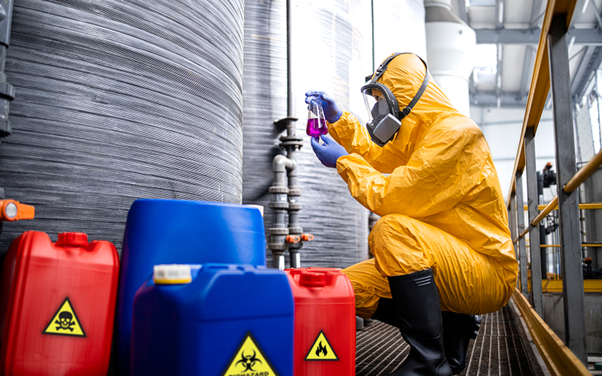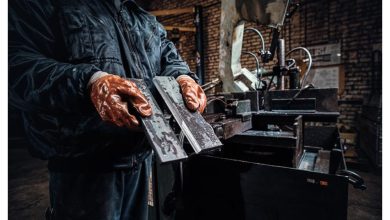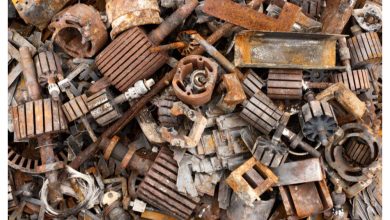Chemical Spill Kit Secrets: Why Spills Demand Immediate Action

In industrial environments, a single chemical spill can escalate from a minor disruption to a full-blown emergency within minutes. Beyond the obvious safety risks, chemical accidents can damage equipment, pollute the environment, and halt production. This is why a chemical spill kit is a compliance item and a frontline defence. For industries handling oils, acids, or solvents, industrial spill kits and specialised absorbent pads for chemical spills are essential tools to restore control quickly. Using them effectively requires balance, foresight, and understanding the science that makes these kits work.
Preparing Without Overcomplicating
One of the biggest challenges companies face is finding a balance in preparation. Stocking too few kits risks being unprepared, while overstocking may waste resources.
The solution lies in assessing risks specific to your workplace. For example, a small laboratory may only need compact kits with a few absorbent pads for chemical spills, while a large warehouse storing multiple drums of chemicals will require full-scale industrial spill kits with socks, pads, and disposal bags.
Placement is another balancing act. Kits stored too far from potential hazard zones may be useless in emergencies. The best practice is to position a chemical spill kit near areas of high risk, such as chemical storage racks, fuelling stations, or machinery using lubricants.
Staff training also ensures balance. Equipping employees with knowledge on when and how to use each component, from gloves and goggles to absorbent pads, bridges the gap between preparation and effective response.
Ultimately, balance means readiness without excess. It ensures the workplace is safe while resources are optimised for efficiency and sustainability.
Anticipating Spills Before They Happen
Spills are unpredictable, but planning for them is not. Companies that embrace proactive strategies often face fewer accidents and recover faster when incidents occur. Thinking ahead means treating a chemical spill kit as part of broader workplace safety planning rather than a last-minute fix.
One forward-thinking approach is risk mapping. By identifying where spills are most likely around mixing stations, drum transfer zones, or loading bays. Companies can decide where to station industrial spill kits. Anticipating frequency and scale also informs whether a compact kit suffices or whether multiple 4-drum spill pallets and large spill stations are necessary.
Maintenance is another area that benefits from foresight. Expired absorbents or missing gloves in a kit can render it useless during an emergency. Regular audits ensure every chemical spill kit remains complete and functional. Forward-thinking companies often assign responsibility for kit checks as part of safety routines, ensuring no surprises when a real spill occurs.
Thinking ahead also includes considering environmental regulations. In Singapore, failure to contain hazardous spills can lead to hefty fines and reputational damage. Having accessible absorbent pads for chemical spills and trained personnel ready to deploy them demonstrates responsibility, preventing small issues from becoming legal or financial crises.
How Spill Kits Actually Work
While spill kits may look straightforward, the science behind their effectiveness is worth understanding. Absorbents, for instance, are engineered with materials designed to target specific liquids.
Universal absorbents soak up oils, coolants, and water-based fluids. Hazmat absorbents, found in specialised chemical spill kit designs, are treated to resist aggressive substances like acids or bases, making them safe for laboratory or chemical plant use.
Absorbent pads for chemical spills work by pulling liquid into fibrous structures, locking it in and preventing further spread. This prevents spills from reaching drains or contaminating soil. Socks and booms, often part of industrial spill kits, create barriers to stop the flow of liquids. While disposal bags ensure hazardous waste is collected and handled responsibly.
The protective gear, from gloves to goggles and coveralls, reflects the science of personal safety. Many chemicals can cause burns or respiratory irritation, so protective equipment ensures responders can deploy absorbents without risking injury.
Understanding this science matters because it helps staff apply the right component for the right spill. Instead of panicking during an incident, trained employees can confidently deploy pads, socks, or booms, minimising damage and ensuring compliance with safety standards.
Smarter Safety Starts with Simple Tools
Chemical spills happen suddenly and demand fast, decisive action. From balancing preparation with practicality, to anticipating incidents before they unfold, to understanding the science that makes spill kits effective, every workplace can take smarter steps towards safety. The chemical spill kit is more than a box of supplies. Alongside industrial spill kits and absorbent pads for chemical spills, it represents a culture of preparedness, one where businesses comply with regulations and protect people, property, and the environment.
Are your kits accessible, complete, and understood by your team? If your workplace handles hazardous liquids, take your time at SafetySam and review your spill preparedness today.




